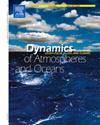Future projections of climate variables and meteorological drought: Insight from CMIP6 models in Southeast Ethiopia
IF 2
4区 地球科学
Q2 GEOCHEMISTRY & GEOPHYSICS
引用次数: 0
Abstract
Climate change has profound effects on precipitation, temperature, and meteorological drought patterns. This study addressed the knowledge gap regarding the future impacts of climate change on these variables in the Arsi Zone, Southeast Ethiopia. By utilizing data simulation from the Coupled Model Intercomparison Phase six (CMIP6) under two shared socioeconomic pathways (SSP2–4.5 and SSP5–8.5), future climatic conditions were projected. The quantile mapping (QM) bias correction technique was implemented in R to improve reliability. The nonparametric Mann–Kendall method and the standardized precipitation index (SPI-3) were employed for the climate variables trend analysis and to estimate drought characteristics, respectively. The findings of this study indicated an increasing trend in future precipitation and maximum temperature across both socioeconomic pathway scenarios from 2020 to 2100, with a more pronounced increase under the SSP5–8.5 scenario. The drought duration, severity, and intensity were also projected to increase from 1985–2014–2020–2049 under both scenarios. The intensity increased by 0.26 and 0.15 under SSP2–4.5 and SSP5–8.5, respectively; however, these values exhibited different trends in the two scenarios from 2020 to 2049–2080–2100. The SSP2–4.5 scenario suggested more frequent drought events, requiring specific strategies for water resource management. However, the SSP5–8.5 scenario exhibited variability in drought projections. As conclusion, there is a need for specific strategies to address the more frequent drought events projected under the SSP2–4.5 scenario, whereas the SSP5–8.5 scenario requires adaptable strategies due to the variable frequencies and it underlines the urgent need for comprehensive adaptation and mitigation strategies.
气候变量与气象干旱的未来预估:来自埃塞俄比亚东南部CMIP6模式的洞察
气候变化对降水、温度和气象干旱模式有着深远的影响。这项研究解决了关于气候变化对埃塞俄比亚东南部Arsi地区这些变量的未来影响的知识差距。利用两种共享社会经济路径(SSP2-4.5和SSP5-8.5)下的耦合模式比对第六阶段(CMIP6)数据模拟,预测了未来气候条件。在R中采用分位数映射(QM)偏差校正技术来提高可靠性。气候变量趋势分析采用非参数Mann-Kendall方法,干旱特征估计采用标准化降水指数(SPI-3)。研究结果表明,2020 - 2100年,两种社会经济路径情景下的未来降水和最高温度均有增加趋势,其中SSP5-8.5情景下的增加更为明显。1985-2014-2020-2049年,两种情景下的干旱持续时间、严重程度和强度均有所增加。在SSP2-4.5和SSP5-8.5下,强度分别增加0.26和0.15;但在2020 - 2049-2080-2100两种情景下,这些值呈现出不同的趋势。SSP2-4.5情景表明干旱事件更加频繁,需要制定具体的水资源管理策略。然而,SSP5-8.5情景在干旱预估中表现出变异性。最后,需要制定具体战略,以应对在SSP2-4.5情景下预测的更频繁的干旱事件,而在SSP5-8.5情景下,由于干旱事件发生的频率不同,需要采取适应性战略,并强调迫切需要制定全面的适应和缓解战略。
本文章由计算机程序翻译,如有差异,请以英文原文为准。
求助全文
约1分钟内获得全文
求助全文
来源期刊

Dynamics of Atmospheres and Oceans
地学-地球化学与地球物理
CiteScore
3.10
自引率
5.90%
发文量
43
审稿时长
>12 weeks
期刊介绍:
Dynamics of Atmospheres and Oceans is an international journal for research related to the dynamical and physical processes governing atmospheres, oceans and climate.
Authors are invited to submit articles, short contributions or scholarly reviews in the following areas:
•Dynamic meteorology
•Physical oceanography
•Geophysical fluid dynamics
•Climate variability and climate change
•Atmosphere-ocean-biosphere-cryosphere interactions
•Prediction and predictability
•Scale interactions
Papers of theoretical, computational, experimental and observational investigations are invited, particularly those that explore the fundamental nature - or bring together the interdisciplinary and multidisciplinary aspects - of dynamical and physical processes at all scales. Papers that explore air-sea interactions and the coupling between atmospheres, oceans, and other components of the climate system are particularly welcome.
 求助内容:
求助内容: 应助结果提醒方式:
应助结果提醒方式:


